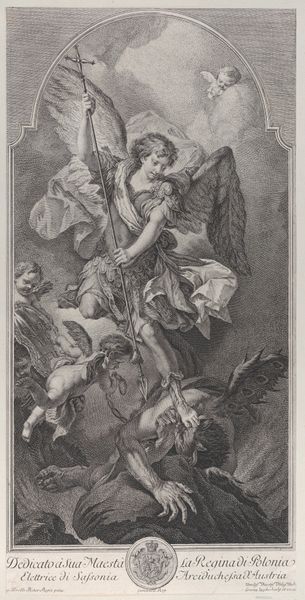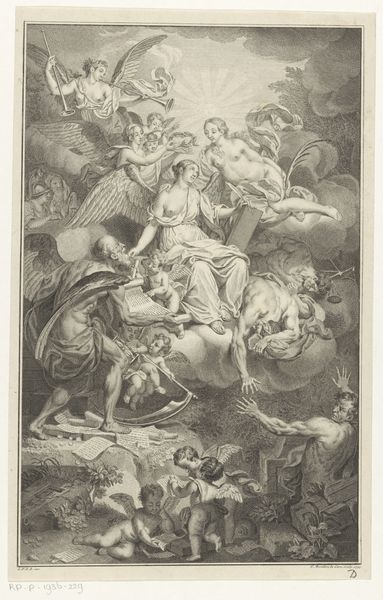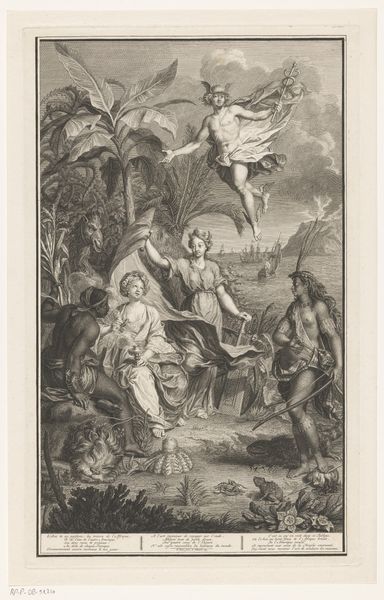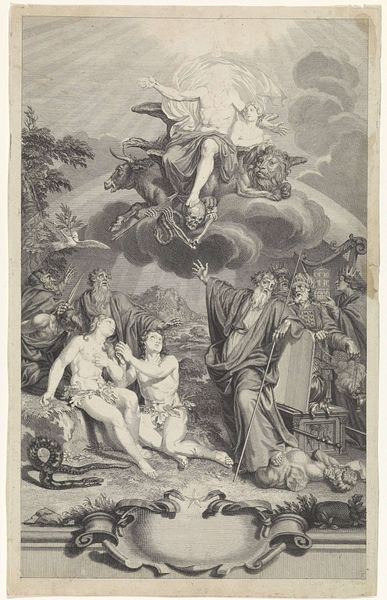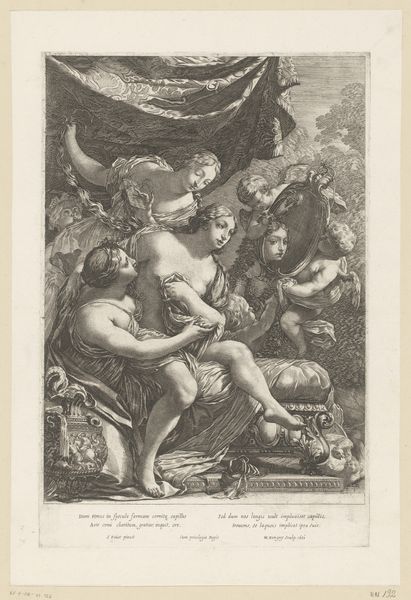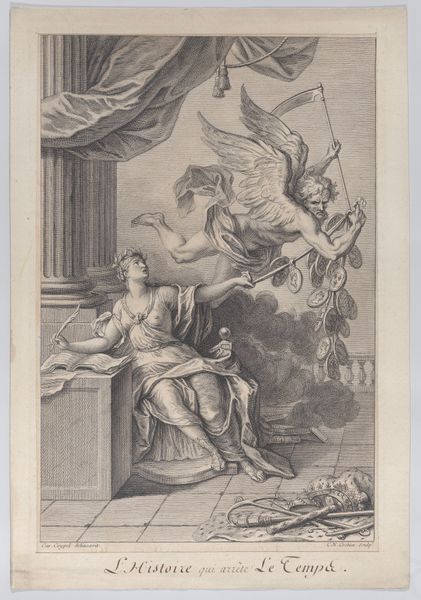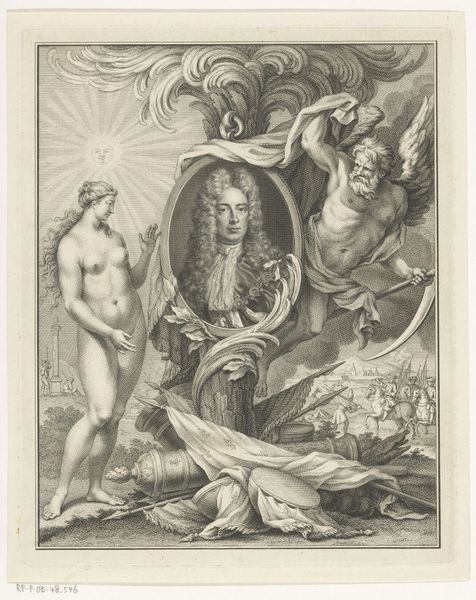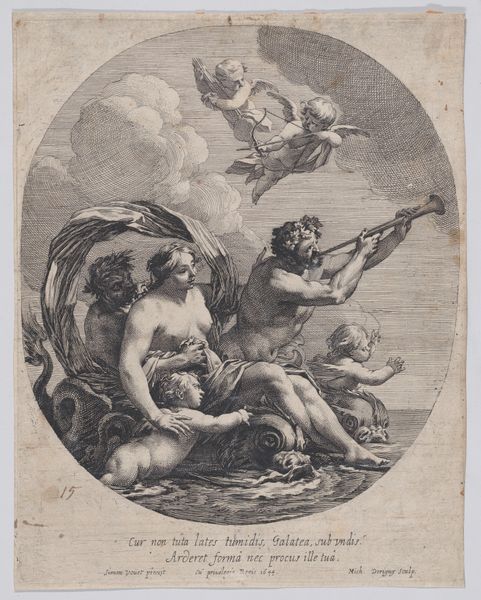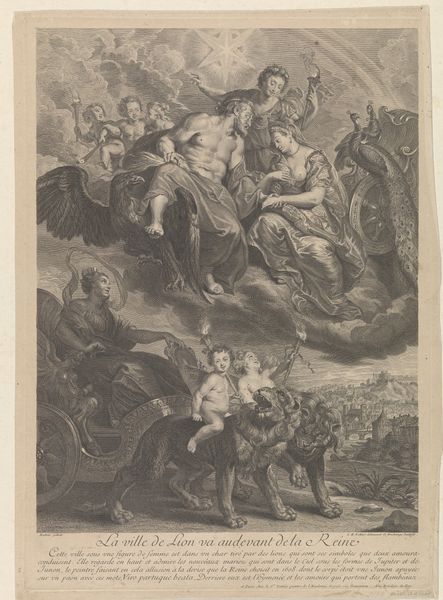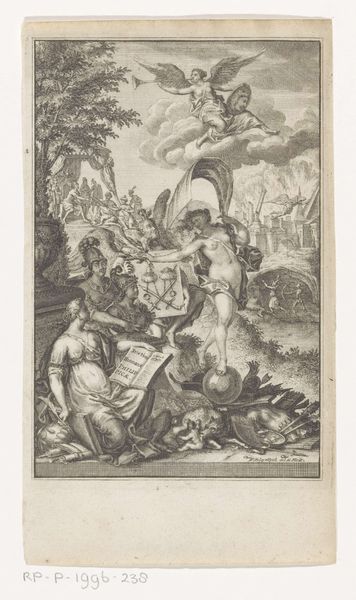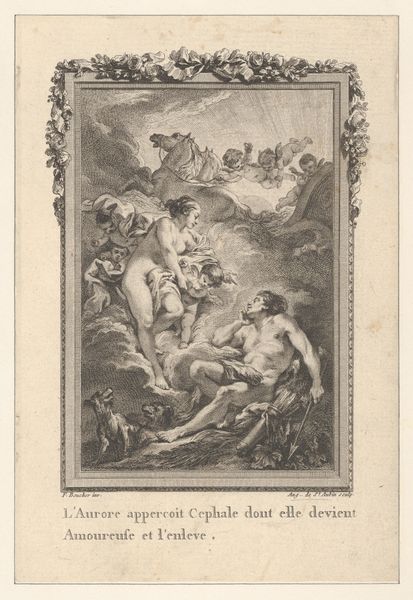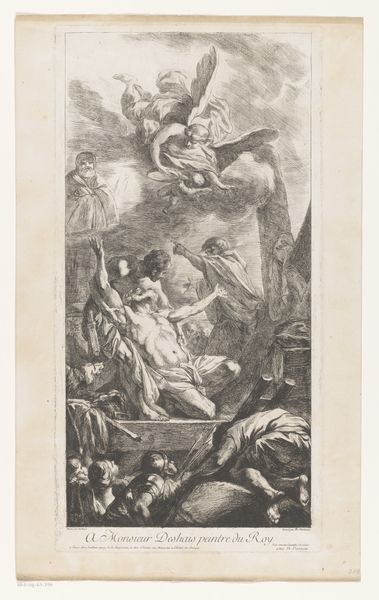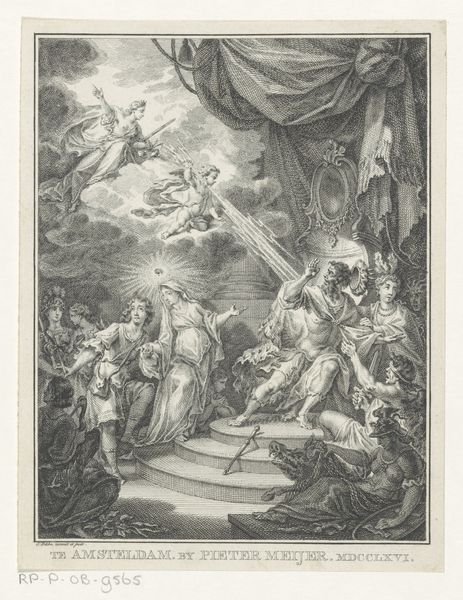
Dimensions: height 490 mm, width 346 mm
Copyright: Rijks Museum: Open Domain
Georg Friedrich Schmidt created this print of Louise Albertine von Grapendorf, and we see her portrait surrounded by wreaths of flowers held aloft by winged figures. These are no mere decorations; wreaths and garlands, from antiquity to the Renaissance, symbolize honor, virtue, and cyclical renewal. Consider the putti, those cherubic figures that populate the scene. Their roots lie in ancient Roman art, where they represented Cupid or Eros, the god of love. Over time, the putto evolved, often appearing in religious contexts as representations of innocence and divine love. Here, they frame the portrait, suggesting a divine appreciation for Louise Albertine. Think of Botticelli's "Primavera," where Flora scatters blossoms, or Titian's "Venus," adorned with myrtle—each evoking the beauty of the natural world. This portrait, too, connects to a primal desire for beauty and connection with nature, tapping into an emotive, almost subconscious, recognition of life's cyclical patterns. The image conveys a psychological longing, a deep-seated desire for renewal and recognition. This yearning resonates across centuries, reminding us that, despite time, our collective memory shapes how we perceive and immortalize beauty.
Comments
No comments
Be the first to comment and join the conversation on the ultimate creative platform.
